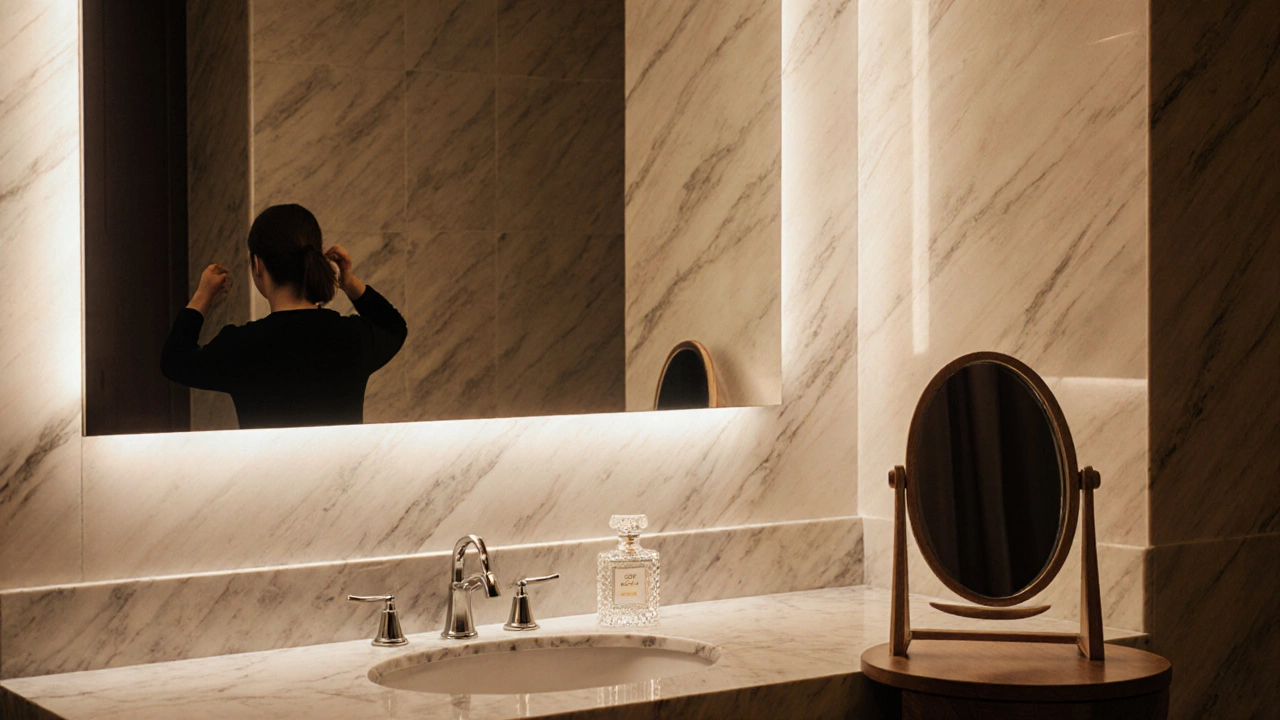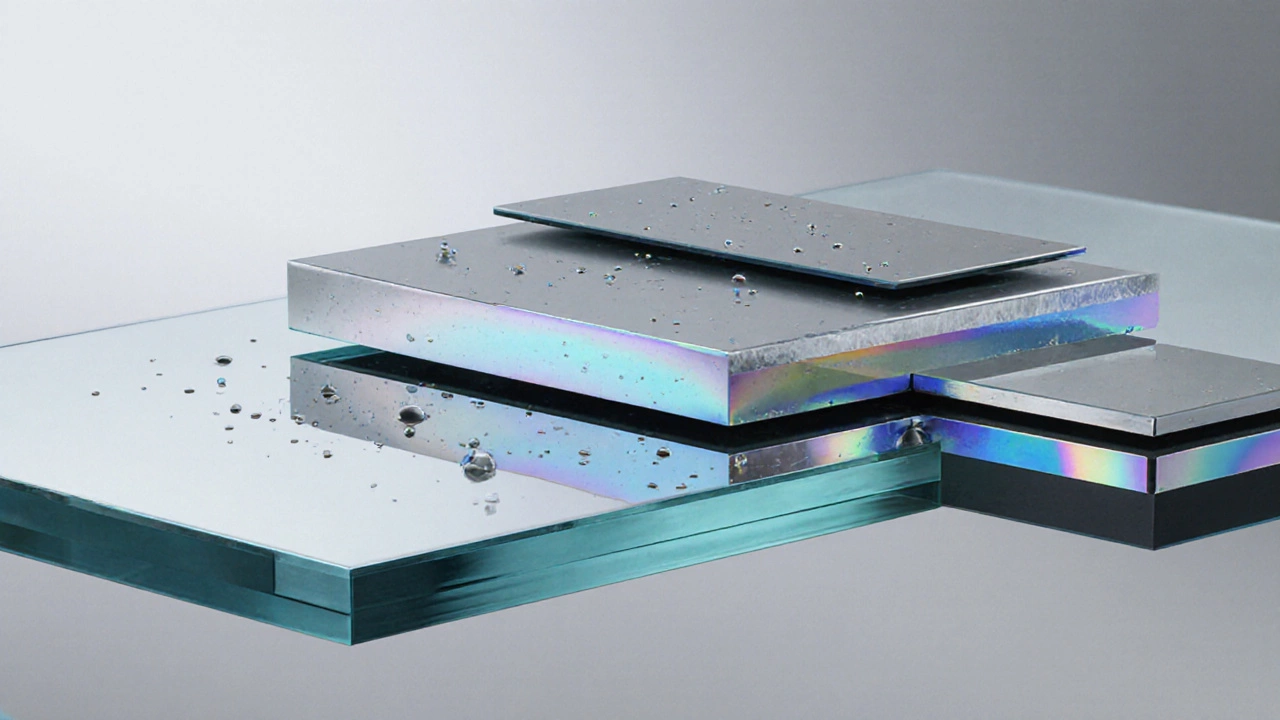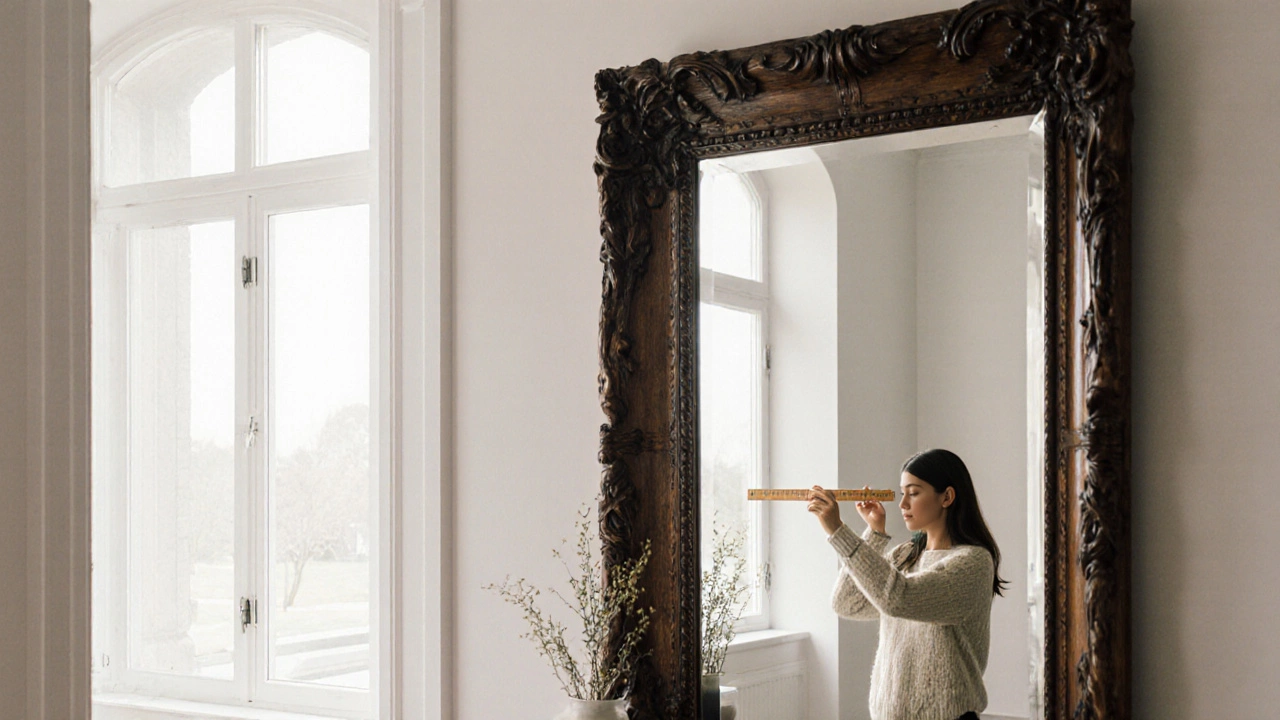Do Expensive Mirrors Offer Better Quality?
 Oct, 19 2025
Oct, 19 2025
Mirror Quality Calculator
Mirror Quality Assessment
This tool evaluates mirror quality based on technical specifications. Enter your mirror's characteristics to see how it compares to budget, mid-range, and premium options.
Quality Assessment Results
Estimated Quality Level:
Price Category:
Recommended:
Key Specifications:
Glass:
Coating:
Frame:
Your mirror's quality is compared to premium mirrors
Ever walked into a boutique bathroom and wondered if the pricey mirror on the wall is really worth it? The short answer is: it depends on what you value most - clarity, durability, or style. To untangle the hype, we first need to know what actually makes a mirror costly.
Mirror is a reflective surface, typically glass coated with a metallic layer, used to produce an image of whatever is in front of it. From mass‑produced vanity sheets to handcrafted wall statements, mirrors span a huge price spectrum. In this guide we’ll break down the science, the materials, and the buying tactics so you can decide whether expensive mirrors truly deliver a better experience.
What Drives the Price Tag?
- Glass thickness - Thicker glass resists warping and stands up better to impacts.
- Coating technology - Silver backing, aluminized layers, or multi‑layer dielectric finishes affect reflectivity and longevity.
- Frame material - Solid wood, polished metal, or hand‑carved resin add labor costs.
- Optical flatness - Mirrors polished to a tighter tolerance produce fewer distortions.
- Brand reputation and design exclusivity - Limited‑edition collections command a premium.
Glass Thickness - More Than Just a Number
Standard bathroom mirrors often use 3 mm to 4 mm float glass. In high‑end pieces you’ll see 6 mm, 8 mm, or even 10 mm. The benefits of extra thickness are twofold:
- Rigidity: Thicker glass flexes less, which means the reflected image stays true even if the mounting surface isn’t perfectly flat.
- Safety: If a thick mirror breaks, it tends to crack into larger shards rather than a fine spiderweb, reducing injury risk.
However, beyond 8 mm the visual gain diminishes. Most professional photographers agree that a well‑manufactured 6 mm mirror already offers optical performance indistinguishable from a 10 mm version in a typical home setting.
Coating Types - What’s Behind the Shine?
The reflective layer is where the real expense often hides. Here are the three most common approaches:
- Silver backing: Traditional method using a thin silver film applied by chemical deposition. It offers 92‑94% reflectivity but can tarnish over time, especially in humid bathrooms.
- Aluminized coating: Aluminum is sputtered onto the glass in a vacuum chamber. This process yields 88‑91% reflectivity, better corrosion resistance, and a lower price point.
- Dielectric (multi‑layer) coating: Several ultra‑thin metal‑oxide layers are deposited, providing 95‑98% reflectivity and superior durability. These are common in luxury mirrors and studio equipment.
When you compare a cheap aluminum mirror to a high‑end dielectric one, the difference you’ll notice is less ghosting, higher contrast, and a longer lifespan without needing re‑silvering.
Frame Materials - Style Meets Substance
A mirror’s frame can be purely decorative or structural. Here’s a quick rundown:
- Solid wood (e.g., oak, walnut) - Offers warmth and can be carved, but may warp in high humidity unless sealed.
- Metal (e.g., brushed stainless steel, brass) - Provides a sleek modern look and excellent strength. Powder‑coated finishes add rust resistance.
- Recycled resin or acrylic - Lightweight, often used for budget décor; less durable over time.
- Hand‑crafted artisan frames - Custom designs, inlays, or gilding. Labor costs can double the mirror’s base price.
For most homeowners, the frame’s visual impact outweighs any functional advantage, but a sturdy metal frame does give extra protection against accidental bumps.

Reflectivity and Optical Flatness - The Numbers That Matter
Two technical specs reveal whether a mirror is truly “better”:
- Reflectivity %: Higher numbers mean brighter, clearer images. Dielectric mirrors hit 98% in labs, while cheap aluminum mirrors sit around 88%.
- Flatness tolerance: Measured in wavelength (λ) of light. A mirror flat to λ/10 will show virtually no distortion; many low‑cost mirrors are only flat to λ/4, producing a subtle waviness that can affect makeup lighting or precision tasks.
In practical home use, a reflectivity above 92% and flatness better than λ/8 are excellent thresholds.
Cost vs. Performance - Do You Get What You Pay For?
Let’s translate the specs into dollar terms. Below is a quick cost‑benefit snapshot based on typical market pricing (USD, 2025):
| Category | Glass Thickness | Coating | Reflectivity | Flatness | Typical Price (USD) |
|---|---|---|---|---|---|
| Budget | 3 mm | Aluminum | 88‑90% | λ/4 | $30‑$60 |
| Mid‑range | 6 mm | Silver | 92‑94% | λ/10 | $120‑$250 |
| Premium | 8‑10 mm | Dielectric (multi‑layer) | 95‑98% | λ/20 | $500‑$1,200 |
Notice the jump in flatness and reflectivity as price climbs. If you need a mirror for everyday grooming, the mid‑range tier hits a sweet spot. For professional photography or a statement hallway, the premium tier justifies the cost.
How to Evaluate a Mirror Before You Buy
- Check the glass thickness. Ask the retailer for the spec sheet; at least 6 mm is advisable for durability.
- Ask about the coating. “Is it silver‑backed, aluminized, or dielectric?” Request a reflectivity rating if available.
- Inspect the frame. Look for solid joints, smooth finishes, and no visible warping.
- Test flatness. Place a straight ruler or a piece of printer paper against the glass. Any gaps or light leaks indicate unevenness.
- Look for edge polishing. Finished edges reduce chipping and improve safety.
- Consider the warranty. Premium mirrors often come with 5‑year guarantees on coating and frame.
Following this checklist helps you cut through marketing fluff and focus on measurable qualities.

Cost‑Effective Alternatives - Getting Good Performance on a Budget
If the premium price isn’t in your budget, you can still pick a mirror that performs well:
- Buy a double‑sided mirror with a 6 mm slab. The extra side adds rigidity without a big price jump.
- Look for “silver‑plated” mirrors sold by reputable home‑improvement chains; they often use a thicker silver layer than cheap imports.
- Consider a frameless glass mirror with a simple metal clip mount. You control the frame style separately, often for less.
These options usually land in the $80‑$150 range and still exceed 92% reflectivity.
Maintenance - Keep Your Mirror Looking New
Regardless of cost, proper care extends a mirror’s life:
- Wipe with a soft microfiber cloth and a mild glass cleaner. Avoid abrasive pads that scratch the coating.
- In high‑humidity rooms, run a dehumidifier or install proper ventilation to slow oxidation of silver backs.
- Inspect edges annually for chips. If you notice a chip, seal it with clear epoxy to prevent cracking.
Regular maintenance can keep a mid‑range mirror looking as sharp as a premium one for years.
When It’s Worth Splurging
Investing in a high‑end mirror makes sense when:
- You use it for professional photography, makeup artistry, or medical examination where any distortion matters.
- The mirror is a focal point in a large, open space - a flawless reflection enhances perceived room size.
- You value longevity and want a coating that won’t need re‑silvering for a decade or more.
Otherwise, the mid‑range tier delivers more than enough visual fidelity for daily chores.
Quick Recap
- Glass thickness, coating type, frame material, and flatness are the main price drivers.
- Premium mirrors boast ≥95% reflectivity and flatness better than λ/20, but the visual gain over a good mid‑range mirror is subtle for most users.
- Use the six‑step checklist to assess any mirror, regardless of price.
- Proper cleaning and humidity control prolong performance across all price points.
Do expensive mirrors really reflect more accurately?
Yes, but the difference is most noticeable in high‑precision tasks. Premium dielectric coatings reach 98% reflectivity and tighter flatness tolerances, which reduces ghosting and distortion. For everyday grooming, a mid‑range mirror with 92%‑94% reflectivity is usually sufficient.
Is thicker glass always better?
Thicker glass adds rigidity and safety, but beyond 8 mm the visual benefit plateaus. A well‑made 6 mm mirror offers excellent flatness for most home uses while staying lighter and cheaper.
Can I re‑coat a cheap mirror to make it last?
Re‑coating is possible but costly; professional re‑silvering can cost $80‑$150, sometimes rivaling the price of a new mid‑range mirror. Buying a higher‑grade mirror from the start is often the smarter move.
What frame material should I choose for a bathroom?
Metal frames (stainless steel or powder‑coated aluminum) resist moisture best and provide a sleek look. If you love wood, pick a sealed, water‑proof finish to avoid warping.
How often should I clean my mirror?
Wipe down weekly with a microfiber cloth and a mild glass cleaner. In foggy bathrooms, clean after each shower to prevent mineral buildup.